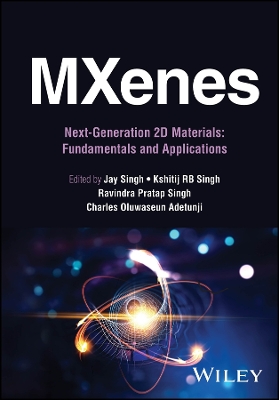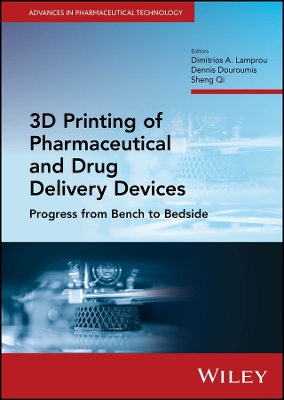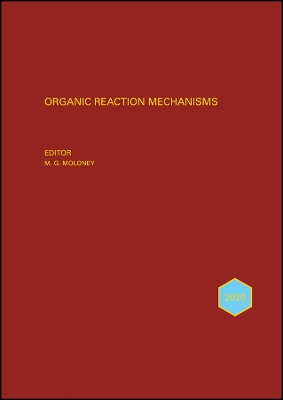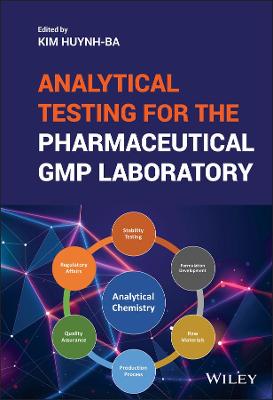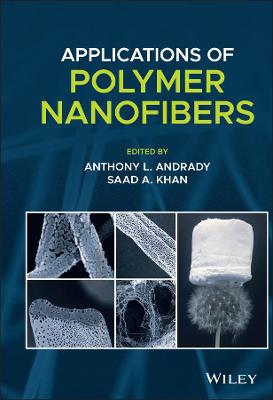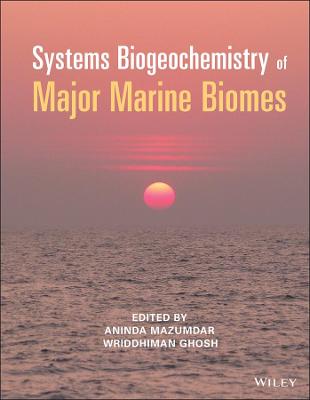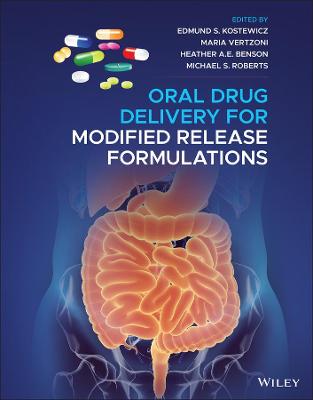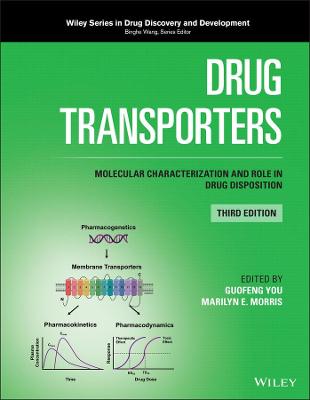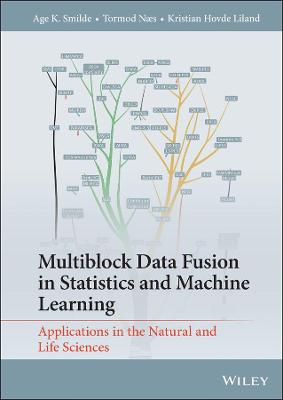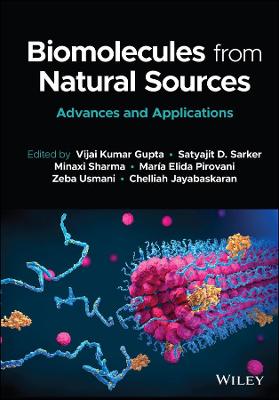High-Performance Materials from Bio-based Feedstocks
 -15%
portes grátis
-15%
portes grátis
High-Performance Materials from Bio-based Feedstocks
Jetsrisuparb, Kaewta; Stevens, Christian V.; Knijnenburg, Jesper T. N.; Supanchaiyamat, Nontipa; Hunt, Andrew J.
John Wiley & Sons Inc
04/2022
432
Dura
Inglês
9781119655725
15 a 20 dias
880
1 High-performance
Materials from Bio-based
Feedstocks: Introduction and Structure of the Book 1
Kaewta Jetsrisuparb, Jesper T.N. Knijnenburg, Nontipa Supanchaiyamat and Andrew J. Hunt
1.1 Introduction 1
1.2 High-performance Bio-based Materials and Their Applications 4
1.2.1 Biomass Constituents 4
1.2.2 Bioderived Materials 7
1.3 Structure of the Book 10
2 Bio-based Carbon Materials for Catalysis 13
Chaiyan Chaiya and Sasiradee Jantasee
2.1 Introduction 13
2.2 Biomass Resources for Carbon Materials 14
2.2.1 Wood from Natural Forests 14
2.2.2 Agricultural Residues 17
2.3 Thermochemical Conversion Processes 18
2.3.1 Carbonization and Pyrolysis 18
2.3.2 Activation 20
2.3.3 Hydrothermal Carbonization 23
2.3.4 Graphene Preparation from Biomass 24
2.4 Fundamentals of Heterogeneous Catalysis 25
2.5 Catalysis Applications of Selected Bio-based Carbon Materials 26
2.5.1 Biochar 26
2.5.2 Modified Biochar 28
2.5.3 Biomass-Derived Activated Carbon 30
2.5.4 Hydrothermal Bio-based Carbons 34
2.5.5 Sugar-Derived Carbon Catalysts 35
2.5.6 Carbon Nanotubes from Biomass 36
2.5.7 Graphene and Its Derivatives 37
2.6 Summary and Future Aspects 37
3 Starbon (R): Novel Template-Free Mesoporous Carbonaceous Materials from Biomass - Synthesis, Functionalisation and Applications in Adsorption, and Catalysis 47
Duncan J. Macquarrie, Tabitha H.M. Petchey and Cinthia J. Mena Duran
3.1 Introduction 47
3.2 Choice of Polysaccharide 48
3.2.1 Synthetic Procedure 49
3.2.2 Derivatisation 51
3.2.3 Applications 56
3.2.4 Adsorption Processes 63
3.2.5 Conclusion 69
4 Conversion of Biowastes into Carbon-based Electrodes 73
Xiaotong Feng and Qiaosheng Pu
4.1 Introduction 73
4.2 Conversion Techniques of Biowastes 74
4.2.1 Carbonization 75
4.2.2 Activation 77
4.3 Structure and Doping 79
4.3.1 Biowaste Selection 79
4.3.2 Structure Control 81
4.3.3 Heteroatom Doping 83
4.4 Electrochemical Applications 84
4.4.1 Supercapacitors 84
4.4.2 Capacitive Deionization Cells 86
4.4.3 Hydrogen and Oxygen Evolution 88
4.4.4 Fuel Cells 90
4.4.5 Lithium-Ion Batteries and Others 94
4.5 Conclusion and Outlook 95
5 Bio-based Materials in Electrochemical Applications 105
Itziar Iraola-Arregui, Mohammed Aqil, Vera Trabadelo, Ismael Saadoune and Hicham Ben Youcef
5.1 Introduction 105
5.2 Fundamentals of Bio-based Materials 106
5.2.1 Bio-based Polymers 106
5.2.2 Carbonaceous Materials from Biological Feedstocks 108
5.3 Application of Bio-based Materials in Batteries 109
5.3.1 General Concept of Metal-Ion Batteries 109
5.4 Application of Bio-based Polymers in Capacitors 115
5.4.1 General Concept of Electrochemical Capacitors 115
5.4.2 Electrode Materials 116
5.5 Alternative Binders for Sustainable Electrochemical Energy Storage 119
5.5.1 Polysaccharides and Cellulose-based Binders 120
5.5.2 Lignin 123
5.6 Application of Bio-based
Polymers in Fuel Cells 123
5.6.1 Chitosan 124
5.6.2 Other Biopolymers 125
5.7 Conclusion and Outlook 126
6 Bio-based Materials Using Deep Eutectic Solvent Modifiers 133
Wanwan Qu, Sarah Key and Andrew P. Abbott
6.1 Introduction 133
6.2 Bio-based Materials 134
6.2.1 Ionic Liquids 136
6.2.2 Deep Eutectic Solvents 136
6.2.3 Morphological/Mechanical Modification 137
6.2.4 Chemical Modification 139
6.2.5 Composite Formation 141
6.2.6 Gelation 143
6.3 Conclusion 145
7 Biopolymer Composites for Recovery of Precious and Rare Earth Metals 151
Jesper T.N. Knijnenburg and Kaewta Jetsrisuparb
7.1 Introduction 151
7.2 Mechanisms of Metal Adsorption 153
7.2.1 Silver 153
7.2.2 Gold and Platinum Group Metals 153
7.2.3 Rare Earth Metals 154
7.3 Composite Materials and Their Adsorption 154
7.3.1 Cellulose-based Composite Adsorbents 154
7.3.2 Chitosan-based Composite Adsorbents 163
7.3.3 Alginate-based Adsorbents 170
7.3.4 Lignin-based Composite Adsorbents 173
7.4 Conclusion and Outlook 175
8 Bio-Based Materials in Anti-HIV Drug Delivery 181
Oranat Chuchuen and David F. Katz
8.1 Introduction 181
8.2 Biomedical Strategies for HIV Prophylaxis 182
8.3 Properties of Anti-HIV Drug Delivery Systems 184
8.4 Bio-based Materials for Anti-HIV Drug Delivery Systems 185
8.4.1 Cellulose 186
8.4.2 Chitosan 190
8.4.3 Polylactic Acid 191
8.4.4 Carrageenan 193
8.4.5 Alginate 194
8.4.6 Hyaluronic Acid 195
8.4.7 Pectin 196
8.5 Conclusion 196
9 Chitin - A Natural Bio-feedstock and Its Derivatives: Chemistry and Properties for Biomedical Applications 207
Anu Singh, Shefali Jaiswal, Santosh Kumar and Pradip K. Dutta
9.1 Bio-feedstocks 207
9.1.1 Chitin 208
9.1.2 Chitosan 208
9.1.3 Glucan 209
9.1.4 Chitin-Glucan Complex 209
9.1.5 Polyphenols 209
9.2 Synthetic Route 210
9.2.1 Isolation of ChGC 210
9.2.2 Derivatives of ChGC and Its Modified Polymers 210
9.2.3 Preparation of d-Glucosamine from Chitin/Chitosan-Glucan 212
9.3 Properties of Chitin, ChGC, and Its Derivatives for Therapeutic Applications 212
9.3.1 Antibacterial Activity 212
9.3.2 Anticancer Activity 212
9.3.3 Antioxidant Activity 212
9.3.4 Therapeutic Applications 213
9.4 Gene Therapy - A Biomedical Approach 213
9.5 Cs: Properties and Factors Affecting Gene Delivery 214
9.6 Organic Modifications of Cs Backbone for Enhancing the Properties of Cs Associated with Gene Delivery 215
9.6.1 Modification of Cs with Hydrophilic Groups 215
9.6.2 Modification in Cs by Hydrophobic Groups 216
9.6.3 Modification by Cationic Substituents 216
9.6.4 Modification by Target Ligands 217
9.7 Multifunctional Modifications of Cs 218
9.8 Miscellaneous 218
9.9 Conclusion 218
10 Carbohydrate-Based Materials for Biomedical Applications 235
Chadamas Sakonsinsiri
10.1 Introduction 235
10.2 Bio-based Glycopolymers 236
10.2.1 Chitin and Chitosan 236
10.2.2 Cellulose 238
10.2.3 Starch 239
10.2.4 Dextran 239
10.3 Synthetic Carbohydrate-based Functionalized Materials 240
10.3.1 Glycomimetics 240
10.3.2 Presentation of Glycomimetics in Multivalent Scaffolds 241
10.4 Conclusion 243
11 Organic Feedstock as Biomaterial for Tissue Engineering 247
Poramate Klanrit
11.1 Introduction 247
11.2 Protein-based Natural Biomaterials 248
11.2.1 Silk 249
11.2.2 Collagen 249
11.2.3 Decellularized Skins 251
11.2.4 Fibrin/Fibrinogen 252
11.3 Polysaccharide-based Natural Biomaterials 253
11.3.1 Chitosan 253
11.3.2 Alginate 254
11.3.3 Agarose 255
11.4 Summary 255
12 Green Synthesis of Bio-based Metal-Organic Frameworks 261
Emile R. Engel, Bernardo Castro-Dominguez and Janet L. Scott
12.1 Introduction 261
12.2 Green Synthesis of MOFs 262
12.2.1 Solvent-Free and Low Solvent Synthesis 262
12.2.2 Green Solvents 264
12.2.3 Sonochemical Synthesis 266
12.2.4 Electrochemical Synthesis 266
12.3 Bio-based Ligands 266
12.3.1 Amino Acids 266
12.3.2 Aliphatic Diacids 267
12.3.3 Cyclodextrins 269
12.3.4 Other 270
12.3.5 Exemplars: Bio-based MOFs Obtainable via Green Synthesis 271
12.4 Metal Ion Considerations 271
12.4.1 Calcium 272
12.4.2 Magnesium 272
12.4.3 Manganese 273
12.4.4 Iron 273
12.4.5 Titanium 274
12.4.6 Zirconium 274
12.4.7 Aluminium 275
12.4.8 Zinc 275
12.5 Challenges for Further Development Towards Applications 276
12.5.1 Stability Issues 276
12.5.2 Scalability and Cost 278
12.5.3 Competing Alternative Materials 279
12.6 Conclusion 280
13 Geopolymers Based on Biomass Ash and Bio-based Additives for Construction Industry 289
Prinya Chindaprasirt, Ubolluk Rattanasak and Patcharapol Posi
13.1 Introduction 289
13.2 Pozzolan and Agricultural Waste Ash 290
13.3 Geopolymer 292
13.4 Combustion of Biomass 294
13.4.1 Open Field Burning 294
13.4.2 Controlled Burning 294
13.4.3 Boiler Burning 294
13.4.4 Fluidized Bed Burning 295
13.5 Properties and Utilization of Biomass Ashes 295
13.6 Biomass Ash-based Geopolymer 299
13.6.1 Rice Husk Ash-based Geopolymer 300
13.6.2 Bagasse Ash-based Geopolymer 304
13.6.3 Palm Oil Fuel Ash-based Geopolymer 306
13.6.4 Other Biomass-based Geopolymers 308
13.6.5 Use of Biomass in Making Sodium Silicate Solution and Other Products 308
13.6.6 Fire Resistance of Bio-based Geopolymer 309
13.7 Conclusion 309
14 The Role of Bio-based Excipients in the Formulation of Lipophilic Nutraceuticals 315
Alexandra Teleki, Christos Tsekou and Alan Connolly
14.1 Introduction 315
14.2 Emulsions and the Importance of Bio-based Materials as Emulsifiers 316
14.2.1 Conventional Micro-and Nanoemulsions 316
14.2.2 Pickering-Stabilised Emulsions 319
14.3 Novel Formulation Technologies: Colloidal Delivery Vesicles 320
14.3.1 Microgels 320
14.3.2 Nanoprecipitation 321
14.3.3 Liposomes 322
14.3.4 Complex Coacervation 323
14.3.5 Complexation 325
14.4 Key Drying Technologies Employed During Formulation 325
14.4.1 Spray Drying 325
14.4.2 Spray-Freeze Drying 327
14.4.3 Electrohydrodynamic Processing 328
14.4.4 Fluid Bed Drying 329
14.4.5 Extrusion 329
14.5 Conclusions and Future Perspectives 330
15 Bio-derived Polymers for Packaging 337
Pornnapa Kasemsiri, Uraiwan Pongsa, Manunya Okhawilai, Salim Hiziroglu, Nawadon Petchwattana, Wilaiporn Kraisuwan and Benjatham Sukkaneewat
15.1 Introduction 337
15.2 Starch 338
15.3 Chitin/Chitosan 340
15.4 Cellulose and Its Derivatives 342
15.4.1 Cellulose Nanocrystals 343
15.4.2 Cellulose Nanofibers 343
15.4.3 Bacterial Nanocellulose 344
15.4.4 Carboxymethyl Cellulose 344
15.5 Poly(Lactic Acid) 345
15.5.1 Bio-based Toughening Agents Used in PLA Toughness Improvement 346
15.5.2 Toughening of PLA and Its Properties Related to Packaging Applications 346
15.6 Bio-based Active and Intelligent Agents for Packaging 348
15.6.1 Active Agents 348
15.6.2 Intelligent Packaging 351
15.7 Conclusion 351
16 Recent Developments in Bio-Based Materials for Controlled-Release Fertilizers 361
Kritapas Laohhasurayotin, Doungporn Yiamsawas and Wiyong Kangwansupamonkon
16.1 Introduction and Historical Review 361
16.1.1 Early Fertilizer Development and Its Impact on Environment 361
16.1.2 Controlled-Release Fertilizer 362
16.2 Mechanistic View of Controlled-Release Fertilizer from Bio-based Materials 365
16.2.1 Coating Type 366
16.2.2 Matrix Type 367
16.2.3 Other Release Mechanisms 368
16.3 Controlled Release Technologies from Bio-based Materials 368
16.3.1 Natural Polymers and Their Fertilizer Applications 369
16.3.2 Bio-based Modified Polymer Coatings for Controlled-Release Fertilizer 376
16.3.3 Biochar and Other Carbon-based Fertilizers 380
16.4 Conclusion and Foresight 385
Index 399
1 High-performance
Materials from Bio-based
Feedstocks: Introduction and Structure of the Book 1
Kaewta Jetsrisuparb, Jesper T.N. Knijnenburg, Nontipa Supanchaiyamat and Andrew J. Hunt
1.1 Introduction 1
1.2 High-performance Bio-based Materials and Their Applications 4
1.2.1 Biomass Constituents 4
1.2.2 Bioderived Materials 7
1.3 Structure of the Book 10
2 Bio-based Carbon Materials for Catalysis 13
Chaiyan Chaiya and Sasiradee Jantasee
2.1 Introduction 13
2.2 Biomass Resources for Carbon Materials 14
2.2.1 Wood from Natural Forests 14
2.2.2 Agricultural Residues 17
2.3 Thermochemical Conversion Processes 18
2.3.1 Carbonization and Pyrolysis 18
2.3.2 Activation 20
2.3.3 Hydrothermal Carbonization 23
2.3.4 Graphene Preparation from Biomass 24
2.4 Fundamentals of Heterogeneous Catalysis 25
2.5 Catalysis Applications of Selected Bio-based Carbon Materials 26
2.5.1 Biochar 26
2.5.2 Modified Biochar 28
2.5.3 Biomass-Derived Activated Carbon 30
2.5.4 Hydrothermal Bio-based Carbons 34
2.5.5 Sugar-Derived Carbon Catalysts 35
2.5.6 Carbon Nanotubes from Biomass 36
2.5.7 Graphene and Its Derivatives 37
2.6 Summary and Future Aspects 37
3 Starbon (R): Novel Template-Free Mesoporous Carbonaceous Materials from Biomass - Synthesis, Functionalisation and Applications in Adsorption, and Catalysis 47
Duncan J. Macquarrie, Tabitha H.M. Petchey and Cinthia J. Mena Duran
3.1 Introduction 47
3.2 Choice of Polysaccharide 48
3.2.1 Synthetic Procedure 49
3.2.2 Derivatisation 51
3.2.3 Applications 56
3.2.4 Adsorption Processes 63
3.2.5 Conclusion 69
4 Conversion of Biowastes into Carbon-based Electrodes 73
Xiaotong Feng and Qiaosheng Pu
4.1 Introduction 73
4.2 Conversion Techniques of Biowastes 74
4.2.1 Carbonization 75
4.2.2 Activation 77
4.3 Structure and Doping 79
4.3.1 Biowaste Selection 79
4.3.2 Structure Control 81
4.3.3 Heteroatom Doping 83
4.4 Electrochemical Applications 84
4.4.1 Supercapacitors 84
4.4.2 Capacitive Deionization Cells 86
4.4.3 Hydrogen and Oxygen Evolution 88
4.4.4 Fuel Cells 90
4.4.5 Lithium-Ion Batteries and Others 94
4.5 Conclusion and Outlook 95
5 Bio-based Materials in Electrochemical Applications 105
Itziar Iraola-Arregui, Mohammed Aqil, Vera Trabadelo, Ismael Saadoune and Hicham Ben Youcef
5.1 Introduction 105
5.2 Fundamentals of Bio-based Materials 106
5.2.1 Bio-based Polymers 106
5.2.2 Carbonaceous Materials from Biological Feedstocks 108
5.3 Application of Bio-based Materials in Batteries 109
5.3.1 General Concept of Metal-Ion Batteries 109
5.4 Application of Bio-based Polymers in Capacitors 115
5.4.1 General Concept of Electrochemical Capacitors 115
5.4.2 Electrode Materials 116
5.5 Alternative Binders for Sustainable Electrochemical Energy Storage 119
5.5.1 Polysaccharides and Cellulose-based Binders 120
5.5.2 Lignin 123
5.6 Application of Bio-based
Polymers in Fuel Cells 123
5.6.1 Chitosan 124
5.6.2 Other Biopolymers 125
5.7 Conclusion and Outlook 126
6 Bio-based Materials Using Deep Eutectic Solvent Modifiers 133
Wanwan Qu, Sarah Key and Andrew P. Abbott
6.1 Introduction 133
6.2 Bio-based Materials 134
6.2.1 Ionic Liquids 136
6.2.2 Deep Eutectic Solvents 136
6.2.3 Morphological/Mechanical Modification 137
6.2.4 Chemical Modification 139
6.2.5 Composite Formation 141
6.2.6 Gelation 143
6.3 Conclusion 145
7 Biopolymer Composites for Recovery of Precious and Rare Earth Metals 151
Jesper T.N. Knijnenburg and Kaewta Jetsrisuparb
7.1 Introduction 151
7.2 Mechanisms of Metal Adsorption 153
7.2.1 Silver 153
7.2.2 Gold and Platinum Group Metals 153
7.2.3 Rare Earth Metals 154
7.3 Composite Materials and Their Adsorption 154
7.3.1 Cellulose-based Composite Adsorbents 154
7.3.2 Chitosan-based Composite Adsorbents 163
7.3.3 Alginate-based Adsorbents 170
7.3.4 Lignin-based Composite Adsorbents 173
7.4 Conclusion and Outlook 175
8 Bio-Based Materials in Anti-HIV Drug Delivery 181
Oranat Chuchuen and David F. Katz
8.1 Introduction 181
8.2 Biomedical Strategies for HIV Prophylaxis 182
8.3 Properties of Anti-HIV Drug Delivery Systems 184
8.4 Bio-based Materials for Anti-HIV Drug Delivery Systems 185
8.4.1 Cellulose 186
8.4.2 Chitosan 190
8.4.3 Polylactic Acid 191
8.4.4 Carrageenan 193
8.4.5 Alginate 194
8.4.6 Hyaluronic Acid 195
8.4.7 Pectin 196
8.5 Conclusion 196
9 Chitin - A Natural Bio-feedstock and Its Derivatives: Chemistry and Properties for Biomedical Applications 207
Anu Singh, Shefali Jaiswal, Santosh Kumar and Pradip K. Dutta
9.1 Bio-feedstocks 207
9.1.1 Chitin 208
9.1.2 Chitosan 208
9.1.3 Glucan 209
9.1.4 Chitin-Glucan Complex 209
9.1.5 Polyphenols 209
9.2 Synthetic Route 210
9.2.1 Isolation of ChGC 210
9.2.2 Derivatives of ChGC and Its Modified Polymers 210
9.2.3 Preparation of d-Glucosamine from Chitin/Chitosan-Glucan 212
9.3 Properties of Chitin, ChGC, and Its Derivatives for Therapeutic Applications 212
9.3.1 Antibacterial Activity 212
9.3.2 Anticancer Activity 212
9.3.3 Antioxidant Activity 212
9.3.4 Therapeutic Applications 213
9.4 Gene Therapy - A Biomedical Approach 213
9.5 Cs: Properties and Factors Affecting Gene Delivery 214
9.6 Organic Modifications of Cs Backbone for Enhancing the Properties of Cs Associated with Gene Delivery 215
9.6.1 Modification of Cs with Hydrophilic Groups 215
9.6.2 Modification in Cs by Hydrophobic Groups 216
9.6.3 Modification by Cationic Substituents 216
9.6.4 Modification by Target Ligands 217
9.7 Multifunctional Modifications of Cs 218
9.8 Miscellaneous 218
9.9 Conclusion 218
10 Carbohydrate-Based Materials for Biomedical Applications 235
Chadamas Sakonsinsiri
10.1 Introduction 235
10.2 Bio-based Glycopolymers 236
10.2.1 Chitin and Chitosan 236
10.2.2 Cellulose 238
10.2.3 Starch 239
10.2.4 Dextran 239
10.3 Synthetic Carbohydrate-based Functionalized Materials 240
10.3.1 Glycomimetics 240
10.3.2 Presentation of Glycomimetics in Multivalent Scaffolds 241
10.4 Conclusion 243
11 Organic Feedstock as Biomaterial for Tissue Engineering 247
Poramate Klanrit
11.1 Introduction 247
11.2 Protein-based Natural Biomaterials 248
11.2.1 Silk 249
11.2.2 Collagen 249
11.2.3 Decellularized Skins 251
11.2.4 Fibrin/Fibrinogen 252
11.3 Polysaccharide-based Natural Biomaterials 253
11.3.1 Chitosan 253
11.3.2 Alginate 254
11.3.3 Agarose 255
11.4 Summary 255
12 Green Synthesis of Bio-based Metal-Organic Frameworks 261
Emile R. Engel, Bernardo Castro-Dominguez and Janet L. Scott
12.1 Introduction 261
12.2 Green Synthesis of MOFs 262
12.2.1 Solvent-Free and Low Solvent Synthesis 262
12.2.2 Green Solvents 264
12.2.3 Sonochemical Synthesis 266
12.2.4 Electrochemical Synthesis 266
12.3 Bio-based Ligands 266
12.3.1 Amino Acids 266
12.3.2 Aliphatic Diacids 267
12.3.3 Cyclodextrins 269
12.3.4 Other 270
12.3.5 Exemplars: Bio-based MOFs Obtainable via Green Synthesis 271
12.4 Metal Ion Considerations 271
12.4.1 Calcium 272
12.4.2 Magnesium 272
12.4.3 Manganese 273
12.4.4 Iron 273
12.4.5 Titanium 274
12.4.6 Zirconium 274
12.4.7 Aluminium 275
12.4.8 Zinc 275
12.5 Challenges for Further Development Towards Applications 276
12.5.1 Stability Issues 276
12.5.2 Scalability and Cost 278
12.5.3 Competing Alternative Materials 279
12.6 Conclusion 280
13 Geopolymers Based on Biomass Ash and Bio-based Additives for Construction Industry 289
Prinya Chindaprasirt, Ubolluk Rattanasak and Patcharapol Posi
13.1 Introduction 289
13.2 Pozzolan and Agricultural Waste Ash 290
13.3 Geopolymer 292
13.4 Combustion of Biomass 294
13.4.1 Open Field Burning 294
13.4.2 Controlled Burning 294
13.4.3 Boiler Burning 294
13.4.4 Fluidized Bed Burning 295
13.5 Properties and Utilization of Biomass Ashes 295
13.6 Biomass Ash-based Geopolymer 299
13.6.1 Rice Husk Ash-based Geopolymer 300
13.6.2 Bagasse Ash-based Geopolymer 304
13.6.3 Palm Oil Fuel Ash-based Geopolymer 306
13.6.4 Other Biomass-based Geopolymers 308
13.6.5 Use of Biomass in Making Sodium Silicate Solution and Other Products 308
13.6.6 Fire Resistance of Bio-based Geopolymer 309
13.7 Conclusion 309
14 The Role of Bio-based Excipients in the Formulation of Lipophilic Nutraceuticals 315
Alexandra Teleki, Christos Tsekou and Alan Connolly
14.1 Introduction 315
14.2 Emulsions and the Importance of Bio-based Materials as Emulsifiers 316
14.2.1 Conventional Micro-and Nanoemulsions 316
14.2.2 Pickering-Stabilised Emulsions 319
14.3 Novel Formulation Technologies: Colloidal Delivery Vesicles 320
14.3.1 Microgels 320
14.3.2 Nanoprecipitation 321
14.3.3 Liposomes 322
14.3.4 Complex Coacervation 323
14.3.5 Complexation 325
14.4 Key Drying Technologies Employed During Formulation 325
14.4.1 Spray Drying 325
14.4.2 Spray-Freeze Drying 327
14.4.3 Electrohydrodynamic Processing 328
14.4.4 Fluid Bed Drying 329
14.4.5 Extrusion 329
14.5 Conclusions and Future Perspectives 330
15 Bio-derived Polymers for Packaging 337
Pornnapa Kasemsiri, Uraiwan Pongsa, Manunya Okhawilai, Salim Hiziroglu, Nawadon Petchwattana, Wilaiporn Kraisuwan and Benjatham Sukkaneewat
15.1 Introduction 337
15.2 Starch 338
15.3 Chitin/Chitosan 340
15.4 Cellulose and Its Derivatives 342
15.4.1 Cellulose Nanocrystals 343
15.4.2 Cellulose Nanofibers 343
15.4.3 Bacterial Nanocellulose 344
15.4.4 Carboxymethyl Cellulose 344
15.5 Poly(Lactic Acid) 345
15.5.1 Bio-based Toughening Agents Used in PLA Toughness Improvement 346
15.5.2 Toughening of PLA and Its Properties Related to Packaging Applications 346
15.6 Bio-based Active and Intelligent Agents for Packaging 348
15.6.1 Active Agents 348
15.6.2 Intelligent Packaging 351
15.7 Conclusion 351
16 Recent Developments in Bio-Based Materials for Controlled-Release Fertilizers 361
Kritapas Laohhasurayotin, Doungporn Yiamsawas and Wiyong Kangwansupamonkon
16.1 Introduction and Historical Review 361
16.1.1 Early Fertilizer Development and Its Impact on Environment 361
16.1.2 Controlled-Release Fertilizer 362
16.2 Mechanistic View of Controlled-Release Fertilizer from Bio-based Materials 365
16.2.1 Coating Type 366
16.2.2 Matrix Type 367
16.2.3 Other Release Mechanisms 368
16.3 Controlled Release Technologies from Bio-based Materials 368
16.3.1 Natural Polymers and Their Fertilizer Applications 369
16.3.2 Bio-based Modified Polymer Coatings for Controlled-Release Fertilizer 376
16.3.3 Biochar and Other Carbon-based Fertilizers 380
16.4 Conclusion and Foresight 385
Index 399

